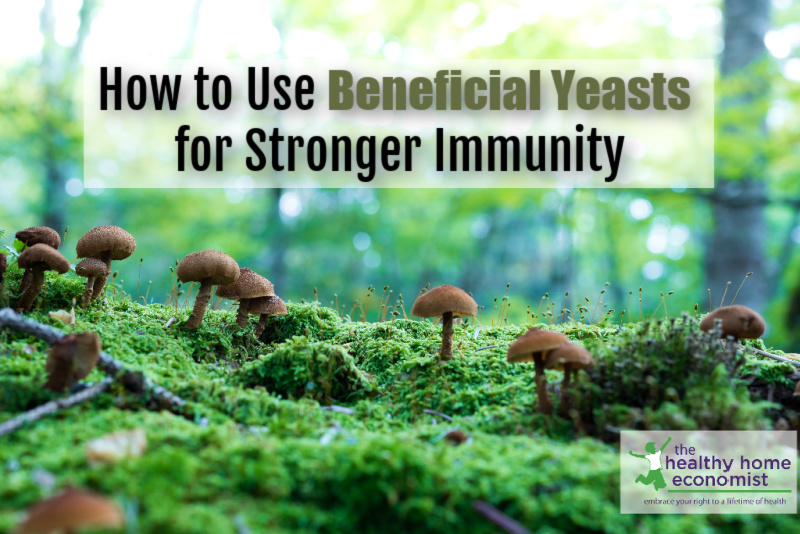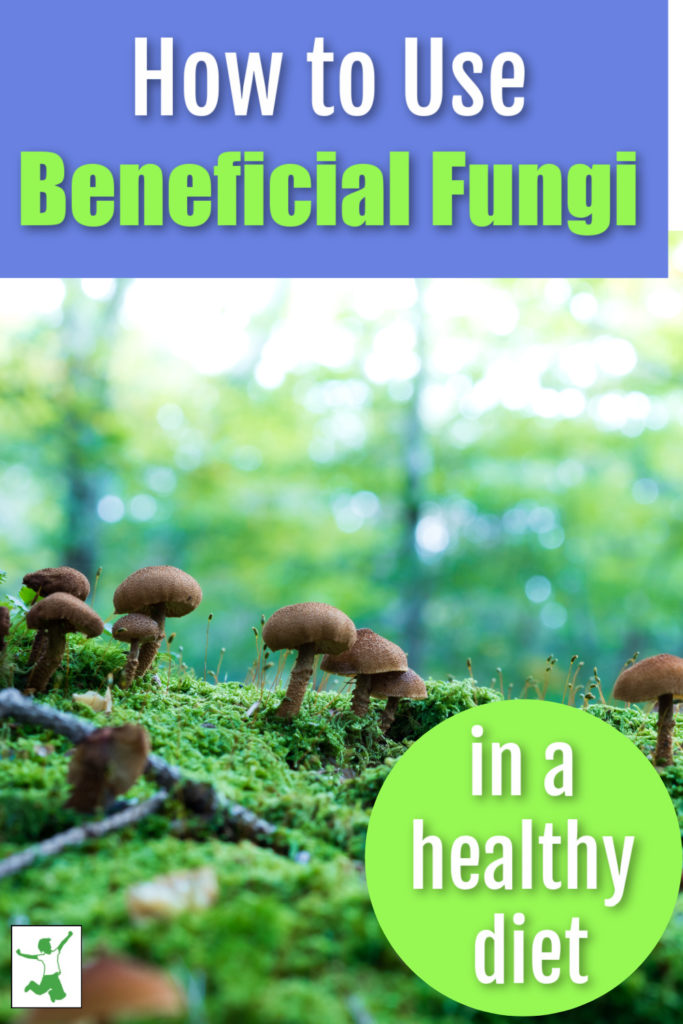How beneficial yeasts and fungi like Saccharomyces boulardii may help prevent and resolve pathogenic Candida overgrowth especially for those on gut-disrupting pharmaceutical drugs like antibiotics or birth control pills and what foods and supplements to look for to incorporate them into the diet. 
When people talk about probiotics, invariably they mean the beneficial bacteria or flora that inhabit our large intestine. These helpful microbes protect us from pathogens, optimize our immune function, and even synthesize natural B vitamins.
In short, these friendly microbes are incredibly important to our health!
Unfortunately, in the excitement over helpful bacteria, discussion about beneficial yeasts is often lost in translation. These unique organisms are proving to be important to immunity as well. They are also on the radar as a tool for keeping pathogenic yeasts like Candida under control.
What are Beneficial Yeasts?
The first beneficial strain of fungi was isolated by French scientist Henry Boulard in 1920.
He noted that in Traditional Chinese Medicine, practitioners treated diarrhea with an extract from lychee fruit. He examined this substance and found that it contained a special strain of yeast. This species was later named Saccharomyces boulardii.
This particular strain of friendly yeast is effective in treating types of diarrhea in both children and adults. (1,2)
In addition, a specialized yeastbiotic supplement contains this strain as an important bulwark against the Candida overgrowth that occurs during a course of antibiotics and for women who are on the birth control pill.
Other Helpful Strains
Many other beneficial strains of yeast have been identified since then. For example, at least nine species are found in properly made, 24-hour homemade kefir. These include (note that S. boulardii is not present):
- Candida humilis
- Kazachstania unispora
- Kazachstania exigua
- Kluyveromyces siamensis
- Kluyveromyces lactis
- Kluyveromyces marxianus
- Saccharomyces cerevisiae
- Saccharomyces martiniae
- Saccharomyces unisporus
Note that kefir must be fermented with LIVE grains if it is to contain these strains. In other words, commercial kefir from the store and homemade kefir made with powdered starter does NOT contain beneficial yeasts.
Note that for those sensitive to dairy, homemade water kefir also contains a few strains of beneficial yeasts.
However, overall, milk kefir contains many more beneficial microbes than non-dairy kefir.
How Friendly Fungi Benefit Our Health
According to Dr. Natasha Campbell-McBride MD in her newly released 2020 book Gut and Physiology Syndrome, beneficial yeasts are proving important to our health.
Just like their beneficial bacterial cousins, they stimulate our immune system, maintain epithelial layers in the gut, produce enzymes, vitamins, and amino acids for our benefit. (3)
Good vs Bad Yeasts
In recent years, scientists have become increasingly interested in using beneficial yeasts, S. boulardii in particular, as an antagonist to pathogenic yeasts such as Candida albicans. (4)
Hence, the rise of a yeast-based probiotic supplement (such as this vetted brand) is an important counterpoint to those on pharmaceuticals that encourage pathogenic fungal overgrowth.
This strain of Candida proliferates rapidly when a person is on a course of antibiotics. Once it gets a foothold in the gut, it can be extremely difficult to get back under control as anyone who has tried the Candida diet or related protocols designed to rebalance gut flora can attest!
Scientists are also investigating how larger fungi like mushrooms can be effective in rebalancing the gut and keeping pathogenic strains of Candida under control. (4)
Alternative to Acne Drugs?
In addition to preventing and resolving fungal overgrowth in the gut, a yeastbiotic supplement can be an effective alternative to some types of face, neck, and back acne.
A study published by the Journal of Applied Microbiology and Biotechnology found that various fungus fighting probiotics markedly suppressed the overgrowth of Propionibacterium acnes. This and similar research indicates the validity of the “gut-brain-skin axis,” or the hypothesis that emotional states, intestinal microbiota, and skin inflammation systematically and cyclically impact one another. (5)
More research will hopefully verify this theory. However, it certainly would be a smart play for natural-minded individuals to at least try a Saccharomyces boulardii supplement for acne prior to use of dangerous acne drugs that further disrupt gut flora and risk autoimmunity issues or worse, down the road.
Contraindications
It is important to note that a beneficial yeast supplement like Saccharomyces boulardii is not appropriate for severely immunocompromised individuals or those with central venous catheters.
Those that are sensitive to molds usually tolerate beneficial yeasts just fine, however. If you are unsure, mix a tiny amount of Saccharomyces boulardii powder with water to form a paste, rub a drop on your wrist and leave it there overnight. Alternatively, use a drop of homemade kefir (NOT commercial brands that contain no beneficial yeasts). If there is no raised red spot in the morning, you are likely tolerant of therapeutic fungi.
Start Slow to Avoid Discomfort
For healthy individuals, it is still important to start very slow when introducing beneficial yeast strains into the diet even when the source is homemade kefir.
Going slowly is important in order to avoid a die-off reaction from Candida that can be extremely uncomfortable. This is also sometimes called a “healing crisis” where symptoms temporarily worsen before getting markedly better.
For long-term effectiveness, elimination of refined sugar in the diet is very important to avoid a resurgence of Candida overgrowth symptoms of brain fog, fatigue, constipation/diarrhea, and other uncomfortable symptoms.
References
(1) Systematic review with meta-analysis: Saccharomyces boulardii in the prevention of antibiotic-associated diarrhea
(2) Prevention of Clostridium difficile Infection with Saccharomyces boulardii: A Systematic Review
(3, 4) Gut and Physiology Syndrome
(5) Saccharomyces boulardii









For those of us who have a casein intolerance, can coconut milk be successfully used for kefir?
Yes, but it doesn’t contain the same level of beneficial yeasts. https://www.thehealthyhomeeconomist.com/video-coconut-milk-kefir/
Where would you recommend a person go to buy the best quality kefir grains?
Here’s my go-to source for kefir cultures. https://www.thehealthyhomeeconomist.com/go/milk-kefir-grains/